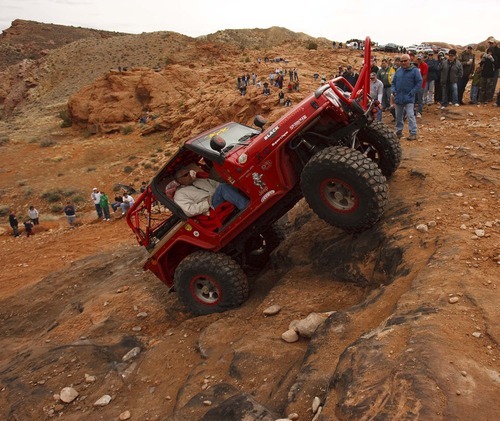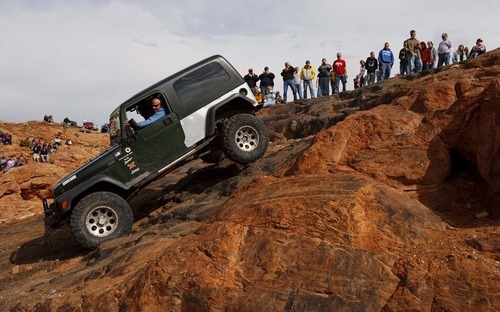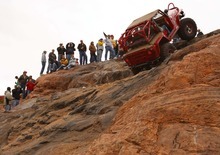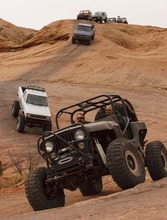This is an archived article that was published on sltrib.com in 2011, and information in the article may be outdated. It is provided only for personal research purposes and may not be reprinted.
An economic study of Grand County finds that the parks, vistas, rivers and trails of southeastern Utah's public lands account for 44 percent of private employment there.
Tourists visiting the Moab area spend most of their time and money in nonmotorized pursuits, according to the report by Headwaters Economics, but analysts see diversity of experiences as key to long-term prosperity.
That the lure of the outdoors is Moab's greatest asset won't surprise many who mountain-bike the slick rock, float the rivers or rev up for the annual Jeep Safari.
But the study may help convince long-term residents — those remembering 1981, when mining provided nearly a quarter of the jobs — that using the land for fun is serious business.
Only 2 percent to 3 percent of Grand County's workers have been miners for the past 15 years, according to the Headwaters report, "The Economic Value of Public Lands in Grand County, Utah."
Nonetheless, the workforce kept growing — at 7 percent a year during the recreation boom of the 1990s, and 2 percent now.
"There is a lot of nostalgia for the Old West," said Ashley Korenblat, a bicycle-tour business owner who served on the county steering committee requesting the study. "But the reality is the number of people who can actually make money ranching or mining around here these days is very tiny."
The other reality the report confirms is that a tourism-recreation economy includes good jobs.
"Income has continued to go up overall," Korenblat said. "The land in its natural state has economic value."
Per capita income rose from $26,420 in 2000 to $30,333 in 2009, Headwaters found.
Government jobs, including a heavy contingent from land agencies, make up 14 percent of the workforce.
Nonlabor income from retirees and business owners who relocated to Moab added $47 million to the economy during the past decade.
Nonresident spending on motorized recreation during visits to Grand County's Bureau of Land Management expanses add up to 269 jobs, according to the report.
Biking, nature viewing and hiking each contributed more, with hiking topping the list at 772 jobs.
But Headwaters economist Ben Alexander, a co-author of the report, said diversity within Moab's recreational attractions is important, and dirt bikes and all-terrain vehicles have their role.
"It turns out that a lot of folks who hike also bring a bike," he said, "or people who spend a day on the Colorado River also go for a Jeep Safari."
In fact, the unusually broad array of outdoor activities is a key selling point for Moab.
"This whole thing works because they are providing a range of opportunities," Alexander said. "Dad can do X and the kids can do Y on the same trip."
He advises community boosters to work on adding trails for all uses while ensuring the natural beauty is preserved.
Off-road vehicle advocate Clif Koontz, of Ride with Respect, said he appreciates the report's suggestions.
"If we're going to be dependent on one industry," he said, "it's nice to at least be diversified within that industry."
Koontz doesn't dispute that nonmotorized recreation creates the most jobs, but he said the report may underplay the role of off-roaders.
The numbers are based partly on voluntary visitor surveys, he said, and riders are dispersed through the county where they may be hard to reach.
Jobs by recreation category on BLM lands in Grand County:
Hiking, 772
Nature viewing, 373
Biking, 313
Motor-vehicle use, 269
Nonmotorized water recreation, 120
Camping, 12
Study available online at: http://tinyurl.com/6eu4xer
Source: "The Economic Value of Public Lands in Grand County, Utah," Headwaters Economics













